Country house heating scheme: system organization options
Heating of any private house should be done not just correctly, but in full accordance with the technical conditions of the object. In this article we will look at how a country house heating system can be organized, and in which case it is best to apply this or that scheme.
Let's start with a key point.
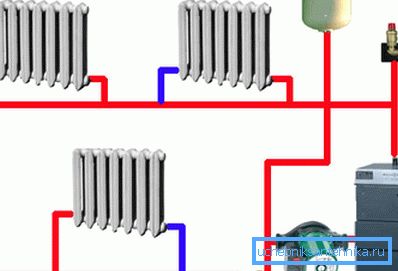
How to choose a boiler
Let's look at the features of each solution in the comparative table below.
| Type of boiler: | Features options: |
| Gas | If a highway with this energy carrier is connected to the house, then there is nothing to think about - you just need to buy and install a gas heater. If the house is small (up to 150 sq. Meters), then a wall unit will do, and if it is a three-story cottage, then it is better to buy a floor option. |
| Electric | In principle, this is not a very profitable option in financial terms. However, if there is no gas, then there is nowhere to go. Boilers of this type are Tenovy and induction. The price of the first products is attractive, however, they do not last very long. Induction, however, are more expensive, but they serve not 5-7 years, but about 20. |
| Devices on diesel and solid fuel | They are distinguished by autonomy and the ability to work on fuel such as wood, cones, sawdust, straw, etc. A liquid-fuel units operate either from diesel or from waste oil. The option is pretty good, if there is no gas, and there are interruptions in electricity. |
Note! The heating scheme in the house can provide for the joint operation of two boilers simultaneously - electric and, for example, solid fuel. A device on solid fuel can be used as a safety net - that is, it can be switched on at the moment when electricity is lost.
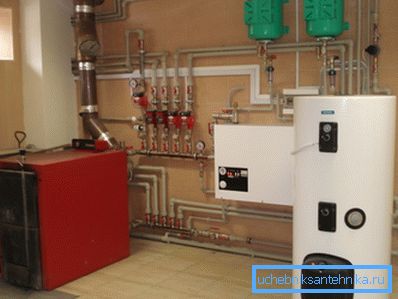
We figured out the boilers, now let's define the equally important elements of the system.
What to choose pipes and radiators
Country house heating schemes usually provide two options for pipes:
- Steel Highway. They are good because they transmit heat around the perimeter of the house, and they are bad because it is difficult to assemble them with your own hands, because you need to use a welding machine. In addition, the products are afraid of corrosion.
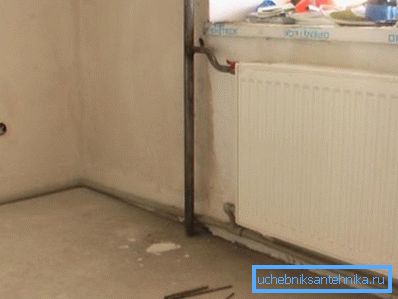
- Plastic pipes. Differ in ease of installation and lack of problem connections. When welding metal, the seams can rust, but the welded plastic becomes in some sense monolithic, without any risk of leakage.
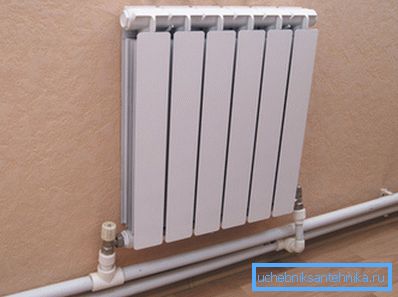
Note! Plastic heating of a country house - it is quite possible to do it yourself, as no special skills are needed. In addition, the installation of plastic pipelines is quite inexpensive, despite the fact that the result is really durable.
So it turns out that plastic pipes and a gas boiler are the best options. Besides the gas heater can be got not usual, but double-circuit for hot water supply.
As for radiators, then for a private house is better to use such products:
- Cast iron batteries. They keep accumulated heat for quite a long time and, moreover, it is important to install them in heating systems with natural circulation of coolant.
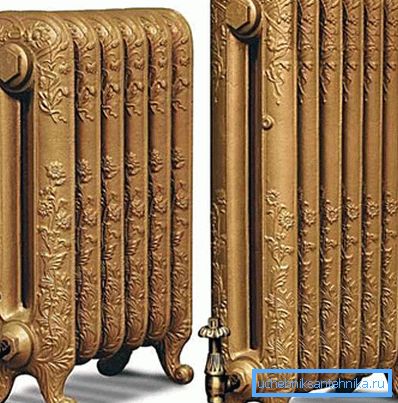
Tip: With natural circulation, a domestic heating scheme involves the use of steel or plastic pipes of large diameter. When implementing the first option, the heat is distributed evenly around the perimeter of the premises, and in the second case, the coolant comes to the radiators as hot as possible.
- Steel panel radiators. This is the optimal solution for forced heating. The batteries have a good level of heat exchange and contain a small amount of water, due to which the boiler has to heat quite a bit of heat carrier.
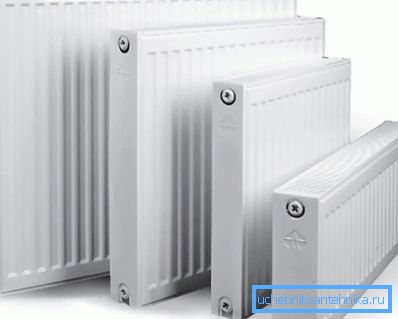
As for bimetallic batteries, it is not advisable to use them for private houses, since the bimetal is designed to work in high pressure lines or where there are strong pressure drops.
However, of course, if this is a heating scheme of a 3-storey building, and even with an underground level, then perhaps a bimetal is worth applying. If you plan a large power head.
So, now consider the specific schemes of home heating - let's analyze the options for organizing heating.
Overview of system assembly options
First of all, the heating scheme of a three-story house and any other, is divided into two types:
- With natural circulation. This is when the movement of water occurs in a natural way, without the use of electric pumps - by changing the density of the coolant.
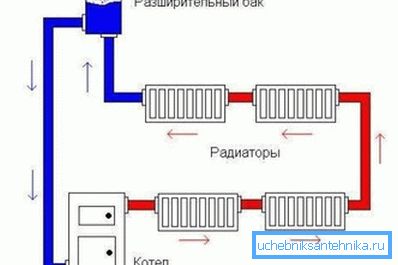
- With forced circulation. Here, electropumps are used to move the fluid. As you understand, full autonomy of work in this case is impossible.

Now with regard to differences depending on the method of distributing pipes.
Single pipe system
In such a line, the coolant bypasses all radiators in series, that is, in turn, and then returns back to the boiler. Here it turns out that colder liquid comes into each subsequent battery than in each previous radiator.

In principle, it is believed that such a heating scheme at home is the most realizable with your own hands, since you have to install a minimum of pipes and connections.
However, the disadvantages are obvious - each subsequent heater in the general chain will be less and less hot. The option is suitable for situations with a small initial budget.
Twin pipe
The point here is that two parallel pipes are supplied to each battery - supply and “return”. That is, two lines are laid along the perimeter of the room - and lines from each of them run to different sides of the radiator.
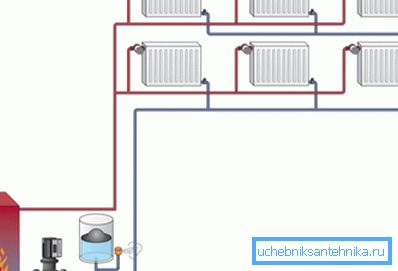
The advantage of this approach is the ability to regulate the power flow in each individual battery. It is also possible to completely block each heater. In the previous case, it would be impossible to do this, because the flow of coolant to each subsequent device would stop.
The system of this type is very good, however, it will need more pipes and fittings (due to the installation of taps and the creation of additional “turns”).
Collector line
The collector scheme of a country house heating system is made more complicated with its own hands than all previous options.
The idea is that a special comb adapter is installed at the outlet of the boiler, from which a separate pair of supply and return pipes is connected to each radiator.
Here, of course, a very large consumption of pipes, but a system of this type is quite convenient to use, since all the adjustment is carried out in one place. The best option is to install it in large houses, where there are many rooms and there are heated floors.
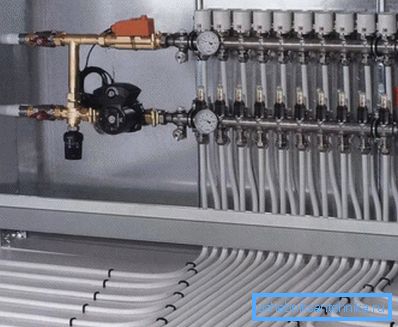
Note! For a uniform flow of fluid relative to each heater, such a system must be balanced before start-up by adjusting the valves on the adapter.
In principle, this is where our review is completed, and now we can summarize.
Conclusion
We have figured out what constitutes the heating and hot water supply scheme of a country house, and also considered on what basis this or that type of heating is functioning.
We hope that now you can design a truly efficient and profitable heating for your home. If the information was not enough, then watch the video at the end of this article.